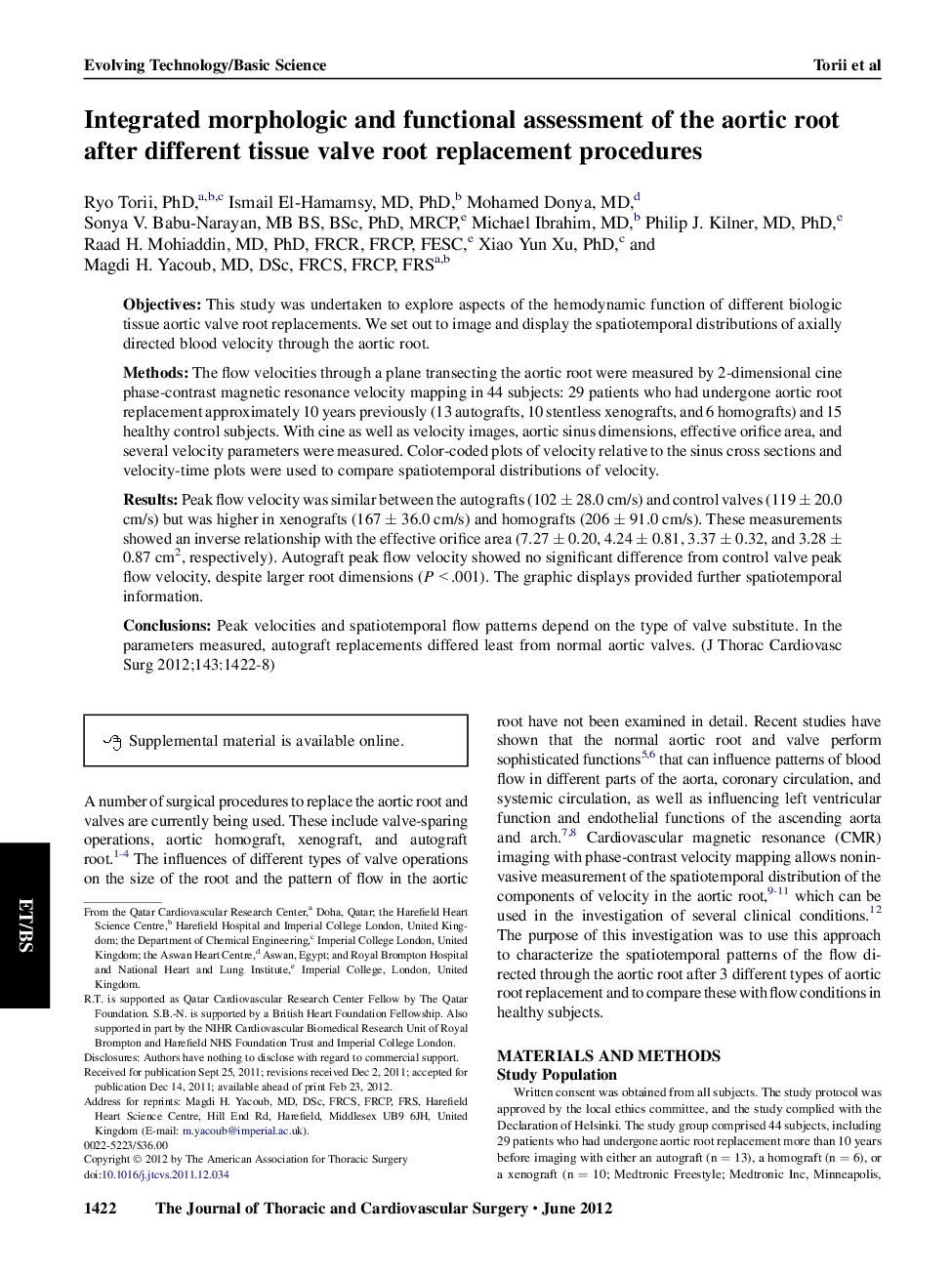| Article ID | Journal | Published Year | Pages | File Type |
|---|---|---|---|---|
| 5990893 | The Journal of Thoracic and Cardiovascular Surgery | 2012 | 9 Pages |
ObjectivesThis study was undertaken to explore aspects of the hemodynamic function of different biologic tissue aortic valve root replacements. We set out to image and display the spatiotemporal distributions of axially directed blood velocity through the aortic root.MethodsThe flow velocities through a plane transecting the aortic root were measured by 2-dimensional cine phase-contrast magnetic resonance velocity mapping in 44 subjects: 29 patients who had undergone aortic root replacement approximately 10 years previously (13 autografts, 10 stentless xenografts, and 6 homografts) and 15 healthy control subjects. With cine as well as velocity images, aortic sinus dimensions, effective orifice area, and several velocity parameters were measured. Color-coded plots of velocity relative to the sinus cross sections and velocity-time plots were used to compare spatiotemporal distributions of velocity.ResultsPeak flow velocity was similar between the autografts (102 ± 28.0 cm/s) and control valves (119 ± 20.0 cm/s) but was higher in xenografts (167 ± 36.0 cm/s) and homografts (206 ± 91.0 cm/s). These measurements showed an inverse relationship with the effective orifice area (7.27 ± 0.20, 4.24 ± 0.81, 3.37 ± 0.32, and 3.28 ± 0.87 cm2, respectively). Autograft peak flow velocity showed no significant difference from control valve peak flow velocity, despite larger root dimensions (P < .001). The graphic displays provided further spatiotemporal information.ConclusionsPeak velocities and spatiotemporal flow patterns depend on the type of valve substitute. In the parameters measured, autograft replacements differed least from normal aortic valves.
